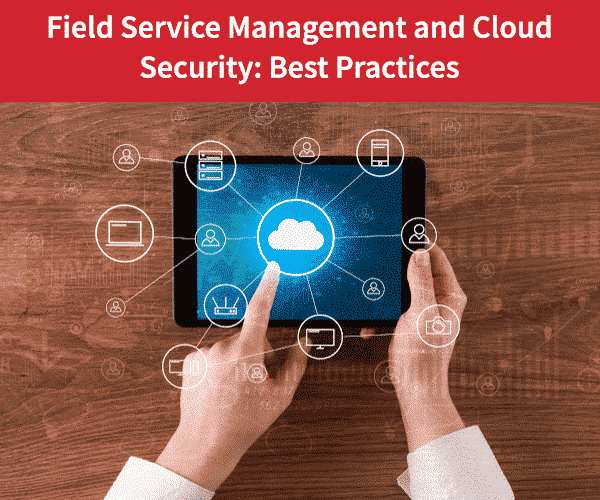
- field service technologies
- fsm
- Implementation
- innovation
- Technologies
5 Considerations for a Successful Tech Implementation
Key Takeaways
Here’s what you’ll learn about successful tech implementation in field service:
- A well-structured rollout plan reduces risks, minimizes disruptions, and improves adoption.
- The ability to integrate with other systems seamlessly eliminates data silos and delays in workflow.
- Success measurement and continuous optimization are the keys to the long-term value of new technology.
The field service industry is undergoing rapid digital transformation, with companies increasingly turning to technology implementation to improve efficiency, customer satisfaction, and operational oversight. “Digital transformation and a focus on customer experience can generate a 20-30% increase in customer satisfaction and economic gains of 20-50%.” (Forbes)
The challenge, however, is implementing new technology in an organization, particularly in field service. Companies must carefully plan their new tech implementation, from technician adoption to system integration, to avoid costly disruptions.
A structured implementation plan for new technology will help to smooth the transition and maximize return on investment. Whether upgrading scheduling software, introducing mobile applications, or implementing FSM solutions like Praxedo, businesses must follow best practices for tech implementation to succeed.
1. How to Define Clear Objectives for Your Technology Implementation?
Businesses must first identify the specific pain points they are trying to solve before implementing new technology systems. “37% of projects fail due to the lack of defined project objectives and milestones.” (PMI)
Common field service management challenges include inefficient scheduling, lack of real-time technician tracking, and slow reporting.
Aligning Business Goals with FSM Software
Companies, including those in sectors like HVAC, utilities, and telecommunications, should directly invest in FSM software for operational goals like:
- Reducing job scheduling inefficiencies.
- Improving the real-time communication between field technicians and dispatchers.
- Better data access improves first-time fix rates.
Defining these objectives also ensures that new tech implementation supports both short-term needs and long-term business growth.
Furthermore, businesses should evaluate the effect of technological implementation on other departments. For example, the finance team may find implementing new technology systems to automate invoking and payment tracking useful. New tech in the workplace that allows instant access to service history and job progress can also benefit the customer service department. Companies can create a more unified, efficient workflow by ensuring that technology implementation aligns with multiple aspects of the business.
Creating a Measurable FSM Technology Implementation Plan
An exemplary implementation plan for new technology includes:
- Reduced response times or increased technician efficiency as key performance indicators (KPIs).
- A strategy for a phased rollout to minimize service disruptions.
- Structured onboarding process for field teams.
Outlining these steps clearly helps businesses avoid common pitfalls of implementing new tech and increases employee adoption rate.
Regular checkpoints are also needed for the successful iregulation of new tech. Businesses should evaluate the implementation of new tech every few weeks to determine if employees are adapting to it. Adjustments can be made if any resistance or operational bottlenecks occur before company-wide deployment. This iterative approaches capabilities to make data-driven decisions and enhance the implementation plan for new technology as they go.
2. How to Develop a Robust Implementation Plan for New Tech?

Poorly executed strategies can result in service delays, technician frustration, and customer dissatisfaction. To avoid this, field service companies must plan every stage of their technological implementation.
Structuring the Field Service Technology Rollout
A typical new technology implementation plan for FSM companies follows these key steps:
- System Evaluation: Evaluating whether the FSM software is compatible with the existing ERPs or CRMs.
- Pilot Testing: Running small scale deployments to get real-world feedback.
- Technician Training: Hands-on guidance on how to use new technology.
- Full-Scale Deployment: Gradually rolling out the system across teams and regions.
If any of these steps are skipped, implementing new technology in an organization can be problematic, and instead of improvements, inefficiencies will occur.
Companies should also have a dedicated team to overcome the rollout of technology implementation to support successful tech implementation further. The team should include project managers, IT specialists, and key stakeholders from different departments.
They monitor progress, identify problems early, and help communicate between executives and field teams. A well-coordinated team will help smooth out the challenges of implementing new tech and ensure a successful launch.
Common FSM-Specific Tech Implementation Pitfalls to Avoid
Key challenges hindering the successful implementation of new technology within Field Service Management (FSM) include:
- Resistance to change among technicians accused to manual workflows.
- Difficulties in integrating novel systems with legacy databases.
- The risk of customer service interruptions stemming from system downtime.
A well-structured technology implementation plan will help avoid these common pitfalls.
Businesses should also perform risk assessments before full deployment. Contingency planning involves identifying potential challenges of implementing new technology in an organization in advance. To reduce the impact of unexpected problems during the transition, backup solutions, alternative workflows, and extra IT support can be arranged.
3. How to Engage Stakeholders and Focus on Change Management?

Employee resistance is one of the biggest barriers to implementing new technology in the workplace. Field technicians may be reluctant to move from traditional methods to FSM software, fearing it will make their jobs more complex or less secure. Stakeholder engagement and strategies can be effective in the process adoption.
Effective Communication and Stakeholder Engagement in Technology Implementation
Communication and Emotional Engagement
Individual stakeholders may have different motivations and concerns when implementing new tech. Open communication and emotional engagement will help businesses address personal resistance and create a sense of ownership of the change.
For example, field technicians may not initially be convinced that an FSM mobile app is a better option than manual paperwork. Clear rationales for the transition (eg, easier job tracking, real-time updates, reduced administrative burden) can be provided to foster enthusiasm and positivity toward the technology implementation. Teams can also be encouraged to buy in by highlighting personal benefits, like less time spent on paperwork and more efficient scheduling.
Observation of Stakeholder Behaviors
An effective commitment strategy also needs to understand stakeholders’ behaviors and reactions. Patterns of how employees interact with existing systems are observed to understand adaptability and resistance.
For example, if dispatchers are reluctant to use automated scheduling tools and we can identify their specific concerns, such as not feeling like they have control over job assignments, we can target training to address those concerns. Behavioral data can also be used to tailor onboarding programs to ensure technicians and office staff feel comfortable with new tech systems without being overwhelmed.
Understanding Cultural Context
An organization’s cultural values determine how employees react to technology implementation. Organizations with a history of embracing digital transformation may find it easier to implement new technology in the workplace, while organizations with more traditional structures may face more pushback.
Patterns of employee resistance or acceptance can be evaluated from past technological implementation efforts. If a past tech implementation plan failed because of insufficient training, businesses could use these experiences to include more hands-on learning in the current rollout. Moreover, creating an innovative learning culture can encourage employees to be more receptive to new technologies.
Systemic Stakeholder Involvement
Effective technology adoption in FSM requires structured stakeholder engagement throughout planning and implementation. A cross-functional approach can be achieved by:
- Establishing field technician pilot teams for tool testing and feedback.
- Conducting regular cross-departmental meetings (dispatch, management, IT) to address integration challenges.
- Defining clear reporting and decision-making workflows for rapid outcome resolution.
This structured involvement guarantees that employees’ needs and concerns are recognized and handled promptly. By listening to feedback and making adjustments, companies can increase the success rate of their new technology implementation plan and decrease the frustration of change.
4. How to Ensure Seamless Integration with Existing Systems?
The FSM software must seamlessly integrate with the existing ERP, CRM, and inventory management systems. Poor integration results in data silos and inefficiencies, preventing dispatchers and technicians from accessing critical information. It is essential to ensure that a new technology implementation plan priorities system compatibility to ensure a smooth transition.
Key Considerations for FSM System Integration
Field service companies should evaluate before implementing new technology systems:
- Data Synchronization: Will work orders and customer stories move over seamlessly?
- Can technicians access information on their devices easily?
- Will dispatchers see job status changes in real time?
Seamless implementation of new technology means that workflows are not disrupted, jobs are not delayed, and technicians are not frustrated.
Furthermore, companies should determine if technology implementation needs to be hybrid. Security requirements, operational flexibility, and the ability to scale determines which deployment model to choose. Organizations should also ensure that introducing new technology does not create unnecessary complexity for technicians and office staff.
Best Practices for FSM Software Implementation
To ensure smooth new technology implementation:
- Use APIs for seamless integration: FSM software should be able to communicate with other business tools without any hassle.
- Run parallel systems for a while: Dispatchers and technicians can adjust before entirely switching.
- Monitor system performance continuously: Quickly identify and resolve integration issues.
An exemplary technology implementation minimizes operational disruption and keeps field service teams productive.
Another critical part is user permissions and security. Implementing new technology systems should be accessible to field teams without exposing sensitive company data. Role-based access controls are configured to ensure that technicians, managers, and administrators have the correct permissions. This prevents data breaches and keeps the process of implementing new technology in the efficient workplace.
5. How to Measure Success and Optimize for Continuous Improvement?

After deploying an FSM system, businesses must measure its impact and continuously optimize it. Measuring success ensures that the implementation plan for new technology achieves the intended benefits and provides a roadmap for future improvements.
Defining KPIs for FSM Technology Success
The key performance indicators for FSM companies are:
- Time saved per job: Has automation improved scheduling efficiency?
- Reduction in missed appointments: Are real-time alerts preventing scheduling conflicts?
- Technician satisfaction levels: Do field employees find the system beneficial?
Tracking these KPIs allows for refining the implementation plan for new technology to ensure long-term success. According to a study, “55% of organizations do not have access to real-time project KPIs.” (Wellington)
Companies should also regularly review system performance reports in addition to KPIs. When FSM software is integrated with business intelligence tools, leadership teams can analyze trends, identify bottlenecks, and fine-tune workflows. Companies can use data analytics to change strategies and improve the effectiveness of their new technology implementation plan over time.
Continuous Optimization of FSM Technology
Companies should do the following after implementing new tech in the workplace.
- Get feedback from dispatchers and technicians.
- Update software based on user insights regularly.
- Integrate advanced features like AI-based scheduling to expand functionality.
Businesses should also consider the scalability of technology implementation. As field service demand increases, the FSM solution should be able to accommodate more jobs, new service areas, and growing technician teams. New technology systems should not be implemented as a short-term fix but as a long-term investment in operational excellence.
Periodic retraining is another best practice. Following the successful implementation of new technology, technicians and dispatchers stay updated on system enhancements and new features through refresher courses. A workforce that fully understands and uses the FSM platform will contribute to greater efficiency, reduced downtime, and higher customer satisfaction.
Conclusion
A structured technology implementation strategy is crucial for FSM companies wanting to improve efficiency and customer service. With clear goals, though planning, stakeholder involvement, seamless integration, and success measurement, businesses can overcome the challenges of implementing new technology and achieve operational improvements.
FSM solutions like Praxedo provide a streamlined approach to job scheduling, dispatching, and technician coordination for organizations considering implementing new FSM technology. A well-planned tech implementation strategy ensures companies remain competitive in a fast-changing industry.
Following these best practices will help field service businesses successfully implement new technology in the workplace and maximize their investment in digital transformation.
FAQs
1. What are the main challenges in implementing new technology in field service?
The biggest problems are employee resistance, integrating legacy systems, and the potential for service disruption during the rollout. Risk mitigation is done through planning, pilot testing, and stakeholder participation in identifying these risks.
2. How can companies ensure smooth tech implementation?
They should establish definite goals, involve all the stakeholders at the initial stages, use phased rollouts, and provide hands-on training. The common checkpoints and feedback loops increase uptake and minimize workflow disturbance.
3. Why is integration with existing systems important?
Poor integration brings about data silos, delays, and confusion. The FSM software must be compatible with ERP, CRM, and inventory software to provide technicians and dispatchers with real-time, accurate information.
4. How do you measure the success of a tech implementation?
Reduced response time, reduced missed appointments, technician satisfaction, and scheduling efficiency are the most significant measures. Companies should regularly track these KPIs to simplify operations and leverage technology.
Our similar articles.
-
- Field Service Management
- Gestion d’interventions
- Technologies
- carbon footprint
- field technicians
Field service software helps reduce your carbon footprint in 2 key ways
June 16, 2022 -
- Software
- Field Service Management
- Software
- Field Service Management
- Security
- Technology
- Security
- Logiciel
- Technologies
How to secure field service management software in the cloud
November 8, 2018 -
- wastewater management
- fsm
- AI in field service management
- sewer maintenance
Sewer Maintenance Software – Reducing Downtime of Operations
September 15, 2025


